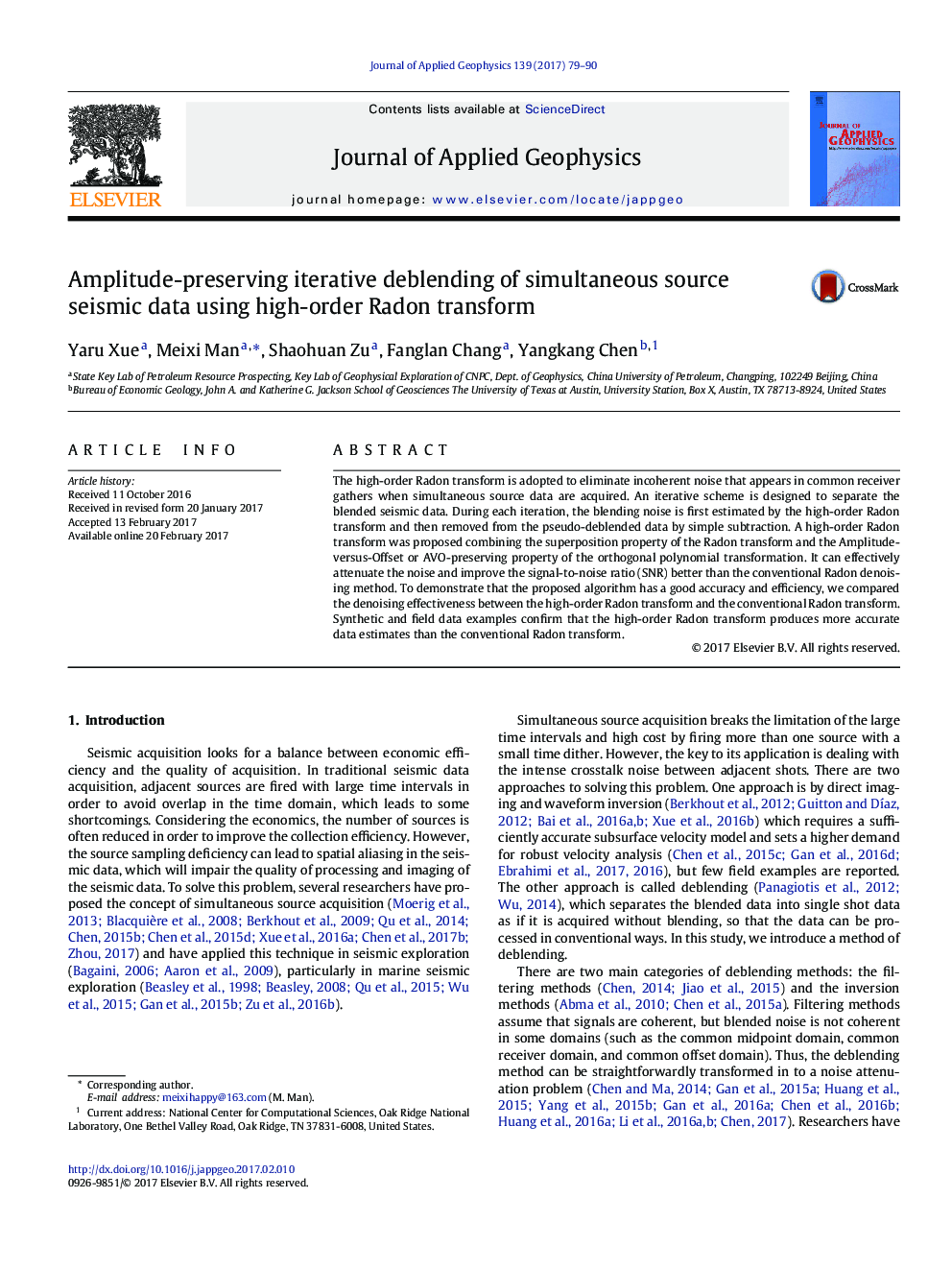| Article ID | Journal | Published Year | Pages | File Type |
|---|---|---|---|---|
| 5787230 | Journal of Applied Geophysics | 2017 | 12 Pages |
â¢An iterative deblending approach based on the high-order Radon transform is proposed.â¢The combination of the AVO-preserving property and the superposition property is applied to eliminate noise.â¢Comparison of the proposed iterative method and the conventional Radon denoising method is made.â¢Synthetic and field data examples demonstrate the effectiveness of our proposed method.
The high-order Radon transform is adopted to eliminate incoherent noise that appears in common receiver gathers when simultaneous source data are acquired. An iterative scheme is designed to separate the blended seismic data. During each iteration, the blending noise is first estimated by the high-order Radon transform and then removed from the pseudo-deblended data by simple subtraction. A high-order Radon transform was proposed combining the superposition property of the Radon transform and the Amplitude-versus-Offset or AVO-preserving property of the orthogonal polynomial transformation. It can effectively attenuate the noise and improve the signal-to-noise ratio (SNR) better than the conventional Radon denoising method. To demonstrate that the proposed algorithm has a good accuracy and efficiency, we compared the denoising effectiveness between the high-order Radon transform and the conventional Radon transform. Synthetic and field data examples confirm that the high-order Radon transform produces more accurate data estimates than the conventional Radon transform.
